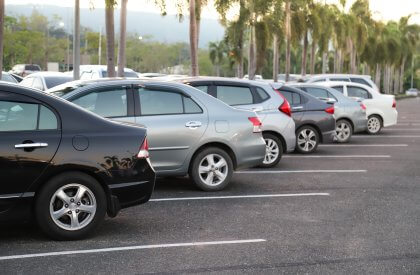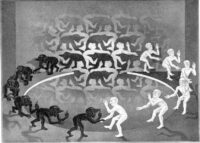
Looking ahead to the future has never been easy. One transformational wave after another has swamped humanity in its wake. The control of fire was perhaps the first such event, followed by flint arrowheads, bows, metallurgy, the wheel, gunpowder and the internal combustion engine. One transformation following another, technologies have repeatedly disrupted our assumptions about the future, but plan we must, apparently.
Our ability to observe and record patterns and to thus anticipate outcomes is prodigious and has allowed us to make plans for the future. Not without suffering great pains of change, humanity has coped with disruptive transformation. The Industrial Revolution, for example, was a great transformation, the effects of which quickly restructured western society, simultaneously creating enormous poverty and enormous wealth. Professions that had endured for centuries disappeared nearly overnight while capitalism flourished.
Our technological revolution has prompted rapid transformation as well. Electricity, computers and digital technology washed across the economic landscape and rapidly swept away entire swaths of well-established professions. Artificial intelligence will do the same, but to an even greater degree. In the light of the acceleration of such transformational waves, can we plan for the future? Not likely.
We fetishistically retain artifacts of culture with meaning to us, and plan for the future based upon our attachments to the past. Those attachments can be economic, cultural, material, or ideological; we habitually envision a future in which our objects of attachment remain relevant despite the high probability of their obsolescence.
For example, America has been in love with privately-owned automobiles for well over one hundred years. The design and planning of our cities, homes, and neighborhoods are predicated on continuing this love affair with cars. And yet, the car I’m driving today bears only a passing resemblance to the car I drove twenty years ago.
My new car can drive itself: steering to stay within the lines on the road, managing the distance between it and the car ahead, and applying the brakes if it deems necessary. It’s more of a super sophisticated computer on wheels equipped with sensory radar than what I used to think of as a car. All that’s missing is its ability to communicate with other cars, and that’s on the horizon. Such communication will be another disruptive technology.
Autonomous cars that drive themselves and communicate with each other over a system-wide digital network will make private automobiles obsolete. Fleets of autonomous cars and trucks available on demand within minutes will transform the entirety of our mobile economy: insurance, financing, traffic patterns, design of neighborhoods, auto accidents. Autonomous robots of all types will do the same to the workplace.
Things are changing too fast; at some point, planning will by necessity have to abandon looking backwards to retain established patterns and attachments. The future is increasingly unknowable; the only guarantee is that it will be suddenly and unpredictably transformational.
Forecasts of all kinds are now impossible to make; long-held assumptions about jobs, climate, agriculture, health, politics, war and peace, in short, the whole of human culture, are being invalidated by successive waves of transformation. Calculating the psychological and emotional cost is equally daunting, but given what what’s already observable, it will be enormous.
Science fiction has a way of becoming science fact and perhaps provides the best way to plan for the future. So what will it be, racing to the stars, or a post-apocalyptic nightmare?





Per the scientists, 99% of all species that have ever existed on the planet have gone extinct. What are the odds that its current population of 8 billion humans can or will will cooperate to prevent the extinction of Homo Sapiens? But not to worry— the planet will go on just fine without us until it is swallowed by a dying, expanding sun in about 10 billion years. Give or take. In the meantime, please recycle.